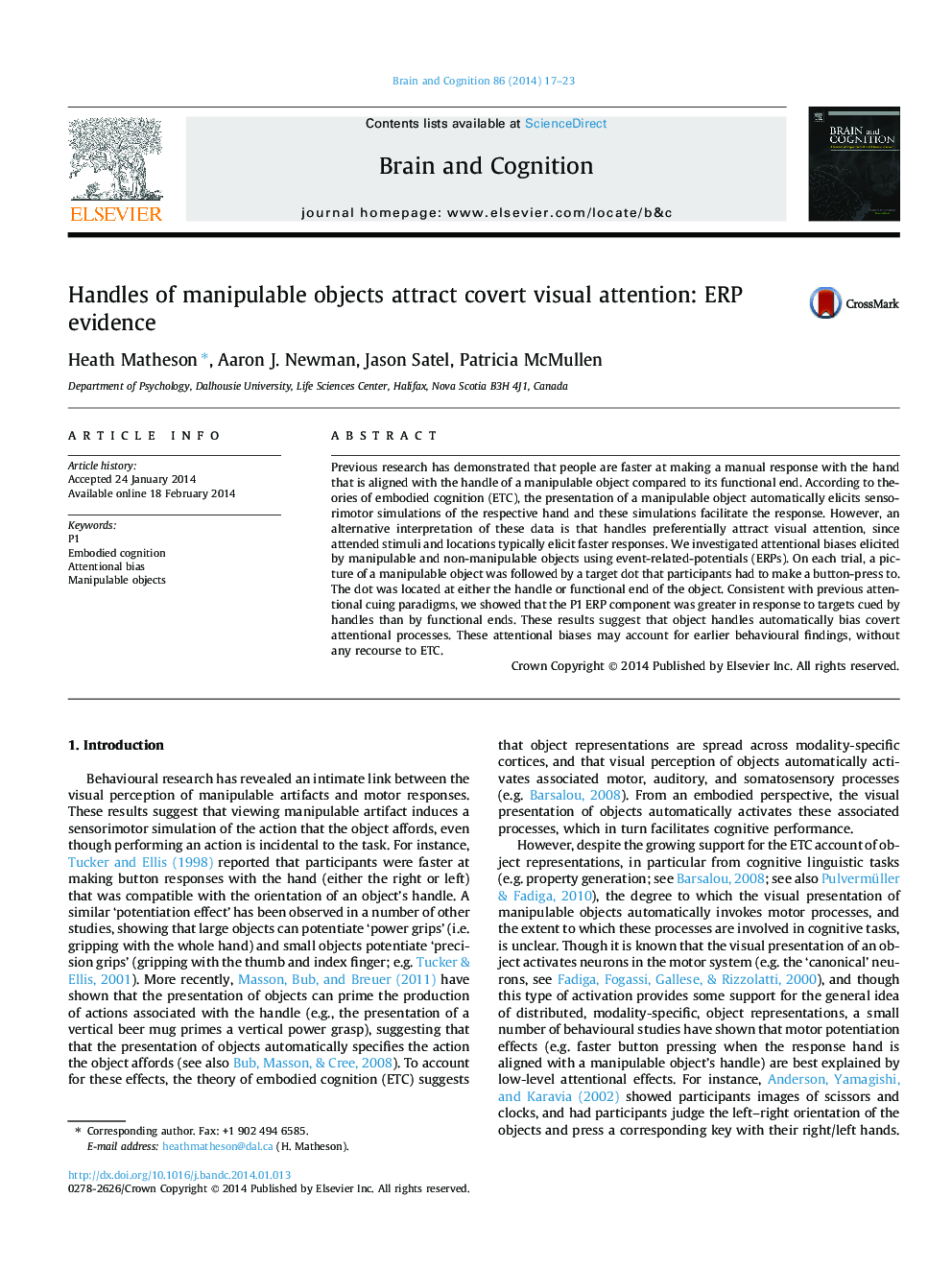| Article ID | Journal | Published Year | Pages | File Type |
|---|---|---|---|---|
| 924260 | Brain and Cognition | 2014 | 7 Pages |
•People make faster responses with a hand that is compatible with object handles.•This suggests manipulable objects induce a motor simulation of object use.•However, attentional bias will result in faster responding to attended location.•Using ERPs, we show P1 enhancement to targets cued by artifact handles.•This demonstrates that attention is biased to object handles.
Previous research has demonstrated that people are faster at making a manual response with the hand that is aligned with the handle of a manipulable object compared to its functional end. According to theories of embodied cognition (ETC), the presentation of a manipulable object automatically elicits sensorimotor simulations of the respective hand and these simulations facilitate the response. However, an alternative interpretation of these data is that handles preferentially attract visual attention, since attended stimuli and locations typically elicit faster responses. We investigated attentional biases elicited by manipulable and non-manipulable objects using event-related-potentials (ERPs). On each trial, a picture of a manipulable object was followed by a target dot that participants had to make a button-press to. The dot was located at either the handle or functional end of the object. Consistent with previous attentional cuing paradigms, we showed that the P1 ERP component was greater in response to targets cued by handles than by functional ends. These results suggest that object handles automatically bias covert attentional processes. These attentional biases may account for earlier behavioural findings, without any recourse to ETC.
